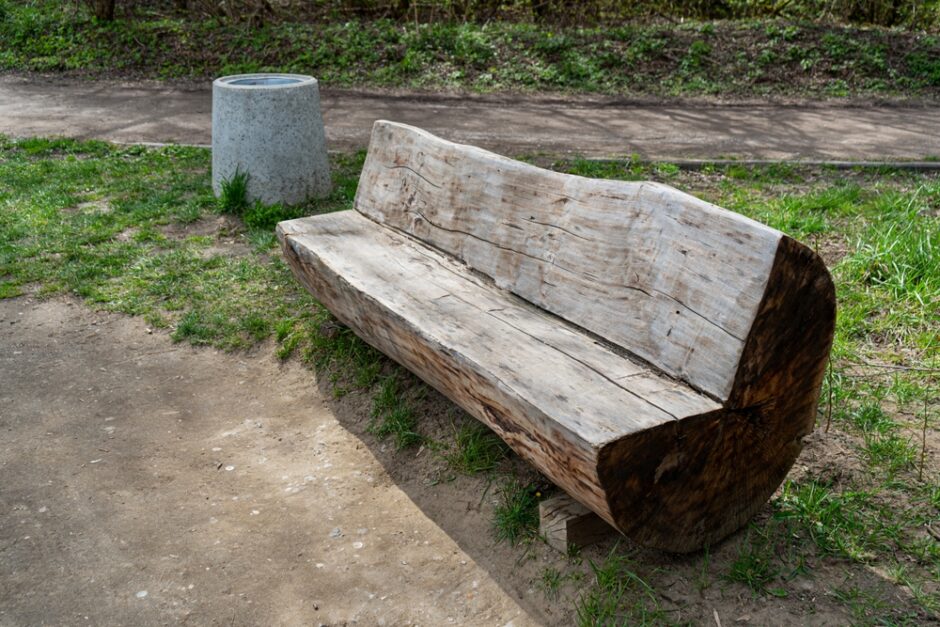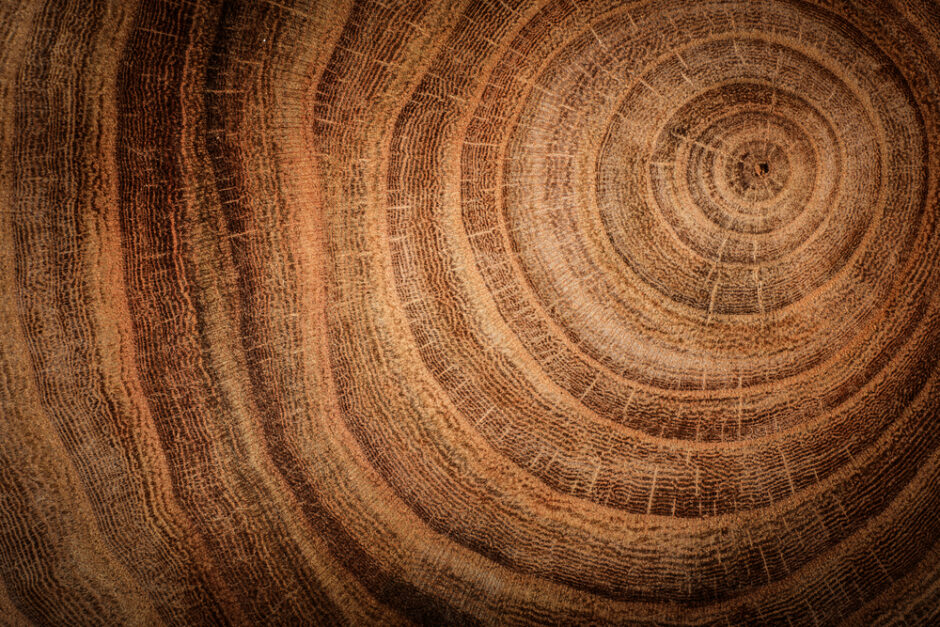
Why Some Plants are Woody and Some Plants Aren’t
The picture at the top is of a cross-section of a tree trunk – A Di-cotyledenous Plant.
The picture below is of a cross-section of a Banana tree – A Mono-cotyledenous Plant.
One is made of wood and one isn’t.
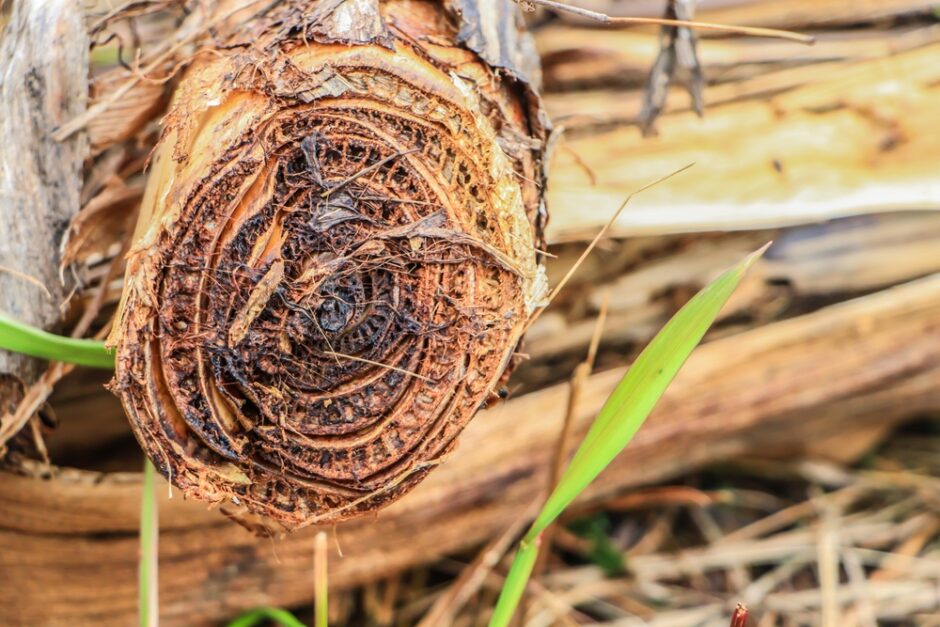
I have heard the definition of a tree described as being a large plant with a stick up the middle.
Although that is an over-simplification, it is a true statement.
But if I asked you “What is a stick?”, I feel sure that you would have to mention that it is made of wood.
So, what is wood?
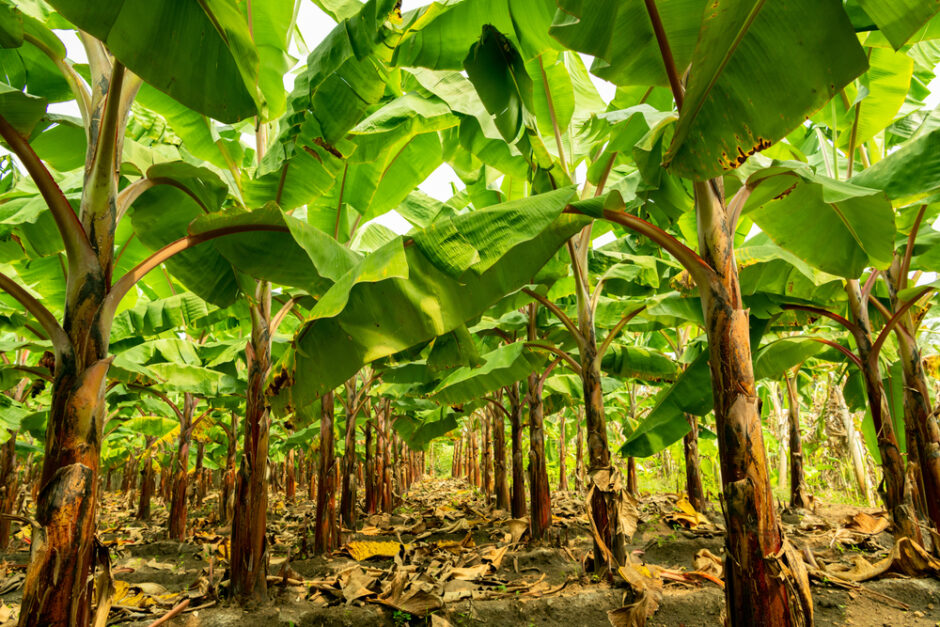
Believe it or not, these Banana trees are actually giant herbs.
The cross-section in the picture above of the Banana trunk clearly shows a massively different appearance to the tree trunk.
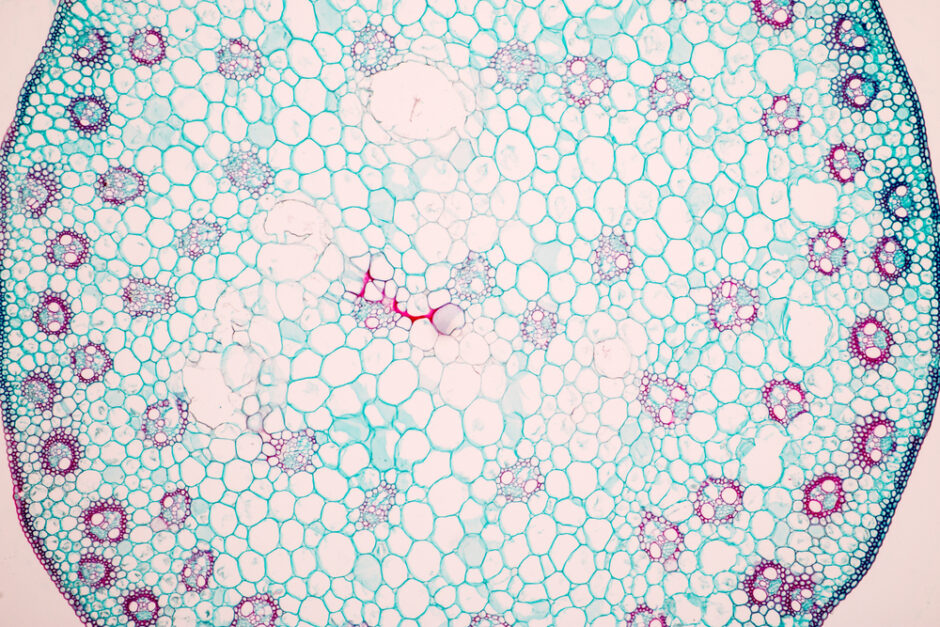
A close-up of the workings of a Monocotyledonous Plant, with the purple areas being the randomly spaced out specialized cells that transport nutrients and minerals about.
So if its trunk isn’t wood, how does it stand up?
The answer is water pressure. A high pressure within the stems makes them turgid and strong enough to take the weight of the plant and the mass of fruit that they produce.
But as you can see, you wouldn’t want a table top made from the cross-section of its trunk.

This is a close-up of a Dicotyledonous Plant where the concentration of the purple cells is gathered predominently around the outside edge of the plant stem
If Banana trees are held up by water pressure, how are trees given the strength to stand up?
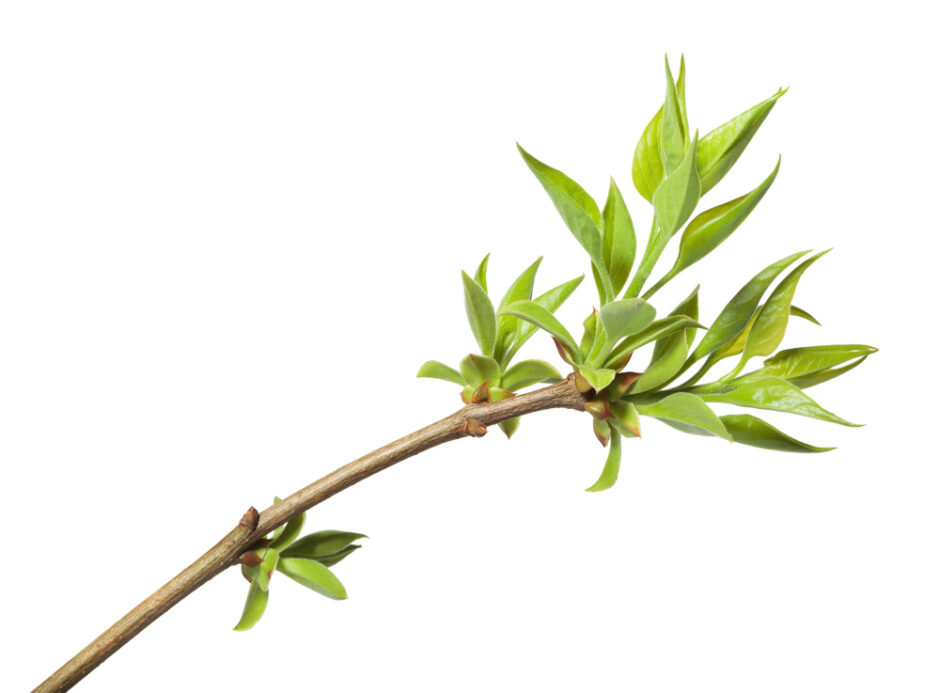
When a tree or shrub throws out new shoots they are soft and pliable, like in the picture above. So soft in fact that initially you can cut them in half with your thumb nail.
However, it is not very long before they have noticeably toughened up to the extent where that would no longer be possible.
So, why is this, and what has happened to make this dramatic change?
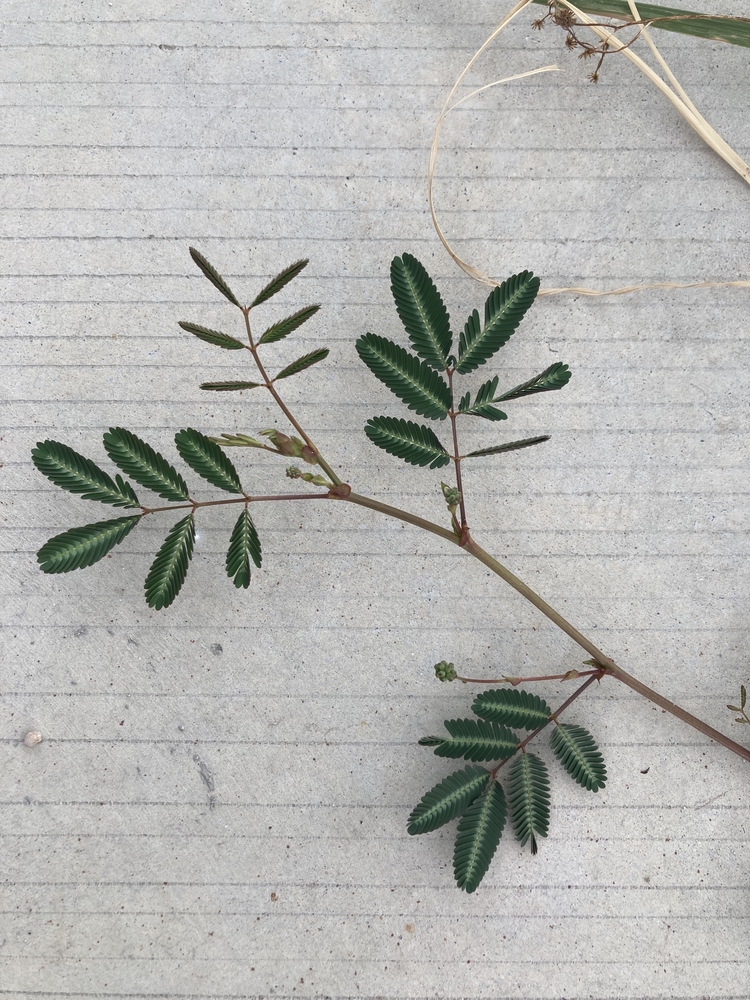
As the new shoots grow, a process known as lignification begins. This new twig is now too tough to sever with a thumb nail.
Lignin is a naturally occurring substance which effectively strengthens the cell walls of the internal vascular cells (the Xylem cells). This “Lignified Xylem” essentially is what ‘Wood’ is.
This process gives strength to all of the internal Xylem cells from the outset, from the very centre of the trunk and to the new wood towards the outside of the trunk.
